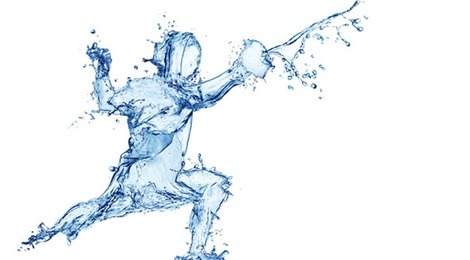Do you find it stressful to keep trying the same combat movement again and again, knowing with each pass that it still needs improvement? When working with a partner, does it raise your blood pressure when things go wrong? And as soon as it goes correctly, do you want to stop?
Alternately, in some cases, when you're not interrupted, you'll become intensely focused, although you might appear stressed out: furrowed brow, narrow eyes, not stopping for rest breaks, not speaking. But it's surprisingly not stressful, it's enjoyable. Time will have flown by, and you may even discover that it's your favourite experience.
What distinguishes the first state of mind from the second? Experts agree that it is a stress reliever to be in a state of flow. It's an approach, employed usually with physical activity that requires expertise, in which the attention is so focused on the task that everything else is ignored. You may have already felt this while playing a game or rock-climbing or reading a great book.
Traditional Flow in Martial Arts: Zen
In budo, the way of the warrior, there are five mental states or stages:
- Shoshin: the beginner’s mind
- Zanshin: the lingering mind
- Mushin: no mind
- Fudoshin: the immovable mind
- Senshin: the enlightened mind
To learn with curiosity, and learn from every training partner, use Shoshin in class. This mental state is childlike and curious, empty of preconceptions. Even at higher levels, use Shoshin to avoid thinking you know anything, and stay inquisitive.
While practicing in class or between classes, try to develop Zanshin which stays in the present moment. When analyzing the past, your mind is going in a loop. The same is true when trying to anticipate the future. Instead of being continually drawn back to the present, just stay in the present and keep moving forward.
Eventually, your practice will become a Mushin state, in which you don’t have to think about each movement or plan what to do. You’ll know. There is an absence of anger, fear or ego, and only the appropriate movement is chosen.
Read more about these mental states in this blog post from The Wisdom Warrior: Bushido: The Five Spirits of Budo.
New Psychology of Flow
How do you achieve a flow state? That's a big question.
First, you may already feel the flow state in some parts of your life. Think about an activity where it required your full concentration and you lost track of time completely. This article from VeryWell gives some examples from individual exercises, as well as time with family and friends and the workplace as clues to where you may already find flow: Using Flow Psychology For Stress Relief. You might also look to those activities and suggestions to practice more flow.
Psychology Today reviewed the book Finding Flow, by Mihaly Csikszentmihalyi in this detailed article that can give you a better understanding of the flow state and some clues to achieving flow yourself.
Meditation
It has become de rigeur to meditate, with the popularity of gurus in yoga and certain silicon valley business circles. It has proven benefits, one of which is to practice going into a flow state independent of physical activity. Practicing meditation a little every day can make any task into a peak experience if you let it.
Flow Triggers
The following list is from the book The Rise of Superman: Decoding the Science of Ultimate Human Performance by Steven Kotler. He studied instances of flow, and ranked the features that the activities had in common. Try to find ways to incorporate as many of these factors as you can into your combat training.
Psychological
- Intensely Focused Attention: Singular Tasks and Solitude (no multi-tasking, no public or open spaces)
- Clear Goals: What are you doing and why
- Immediate Feedback: Direct sensory feedback is best
- Challenge-Skills Ratio: Push existing skills just a little beyond limit
Environmental
- High Consequences: Survival
- Rich Environment: Novelty, unpredictability and complexity
- Deep Embodiment: Every body part in control
Social
- Serious Concentration: Maximum attention
- Shared, Clear Goals: Focused, but open to creative solutions and opportunities
- Good Communication: Listen closely and build upon understanding with "yes, and..."
- Familiarity: Every group member is on the same page
- Equal Participation: Equal skill levels and responsibilities
- Risk
- Sense of Control: Autonomy and competence
Creative
- Creativity: Pattern recognition and risk-taking
In our classes, we can't always achieve the zen state of flow, but I try to eliminate distractions and engage the whole body in complex and new movements, encouraging equal participation and creativity. For your part, as a student, bring clear goals, maximum attention, and a willingness to communicate.
Together, we can all approach a peak state of training.
